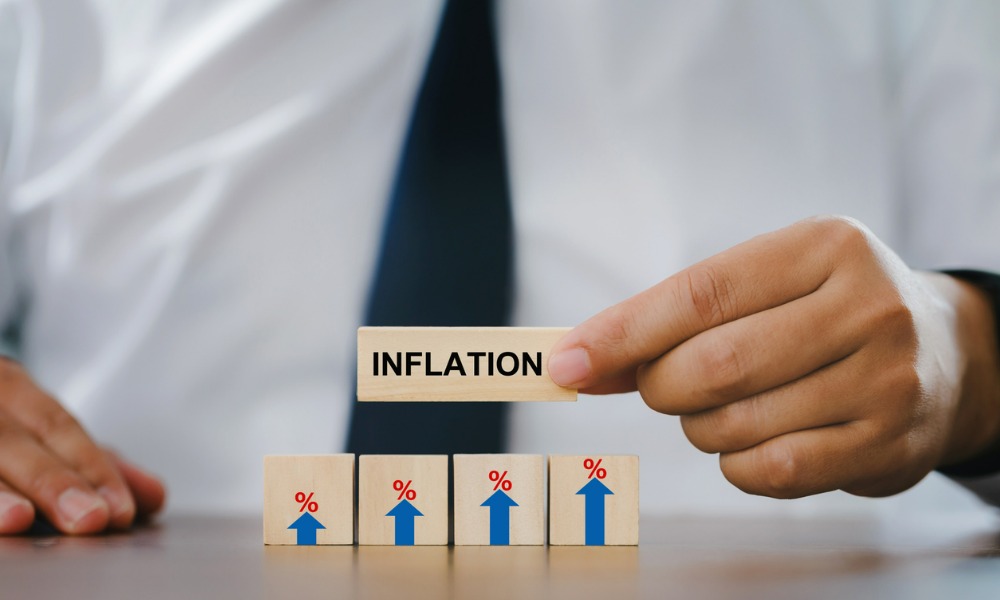

US consumer prices rose at the slowest pace in four months in February, offering some reprieve ahead of tariffs that are expected to drive costs higher.
The consumer price index increased 0.2% after a sharp 0.5% advance in January, according to Bureau of Labor Statistics data out Wednesday. Excluding often volatile food and energy categories, the so-called core measure rose 0.2% as well.
The BLS said nearly half of the advance in the overall measure was due to shelter, but it still decelerated from the prior month.
Airfares fell 4%, the most since June, as several carriers warn of weaker demand ahead. Prices of new cars and gasoline also declined. Grocery prices were little changed after a big increase in January, while car and health insurance costs rose at a more moderate pace.
While Wednesday’s report offers some relief, several measures still indicate that inflation is rearing back up again. And with President Donald Trump rolling out a series of tariffs, prices are expected to rise on a variety of goods from food to clothing, testing the resilience of consumers and the broader economy.
In an address to Congress last week, Trump described the higher prices that tariffs are expected to cause as “a little disturbance” the nation ought to be able to overcome. However, the uncertainty around his trade policy has led to a recent meltdown in stock markets and reignited recession fears. Trump sought to downplay those concerns on Tuesday.
The Federal Reserve is patiently sitting in wait-and-see mode until there’s more clarity on the administration’s actions and the inflation trajectory, with officials widely expected to keep rates steady at next week’s meeting. At the same time, growing calls for a downturn have fueled speculation that policymakers may cut rates sooner than previously thought.
Treasury yields and the dollar moved higher as markets turned to the prospect of an escalating trade war. The S&P 500 opened higher.
Some economists had been looking to this report for a first glance at the impact of Trump’s tariffs — which started with levies on all Chinese products last month and has since expanded to certain items from Mexico and Canada — on consumer prices. However, prices of core goods rose only 0.2%, and categories like furnishings, toys and televisions were also tame.
Shelter prices, the largest category within services, climbed 0.3% after 0.4% in January. Owners’ equivalent rent and rent of primary residence — subsets of shelter — rose by a similar amount.
Excluding housing and energy, services prices advanced 0.2% after rising by the most in a year in the prior month, according to Bloomberg calculations. While central bankers have stressed the importance of looking at such a metric when assessing the overall inflation trajectory, they compute it based on a separate index.
That measure — known as the personal consumption expenditures price index — doesn’t put as much weight on shelter as the CPI, which helps explain why it’s trending closer to the Fed’s 2% target. A government report on producer prices due Thursday will offer insights on additional categories that feed directly into the PCE, which is due later this month.
One of the components from CPI that plays a big role in the core PCE price basket is food away from home, which climbed at the fastest pace since June. Another relevant category is computer software and accessories, which also rose firmly.
“Ultimately, the net impact of President Donald Trump’s policies on CPI will depend on whether weaker services spending outweighs higher goods prices — and in February, it’s clear the disinflationary effect from softening services outweighed the uptick in goods inflation.”
— Anna Wong and Stuart Paul. To read the full note, click here
Policymakers also pay close attention to wage growth, as it can help inform expectations for consumer spending — the main engine of the economy. A separate report Wednesday that combines the inflation figures with recent wage data showed real hourly earnings were up 1.2% from the year before, the most in three months.
Fed officials are also attuned to inflation expectations — particularly over the longer term — which can often influence wages and prices. Consumers surveyed by the University of Michigan in February expected prices over the next five to 10 years to rise at the fastest rate since 1995, while a poll by the New York Fed showed the outlook for inflation three and five years out was stable last month.

Canadian stocks are on a roll in 2025 as the country prepares to name a new Prime Minister.

Two C-level leaders reveal the new time-saving tools they've implemented and what advisors are doing with their newly freed-up hours.

The RIA led by Merrill Lynch veteran John Thiel is helping its advisors take part in the growing trend toward fee-based annuities.

Driven by robust transaction activity amid market turbulence and increased focus on billion-dollar plus targets, Echelon Partners expects another all-time high in 2025.

The looming threat of federal funding cuts to state and local governments has lawmakers weighing a levy that was phased out in 1981.
RIAs face rising regulatory pressure in 2025. Forward-looking firms are responding with embedded technology, not more paperwork.
As inheritances are set to reshape client portfolios and next-gen heirs demand digital-first experiences, firms are retooling their wealth tech stacks and succession models in real time.
